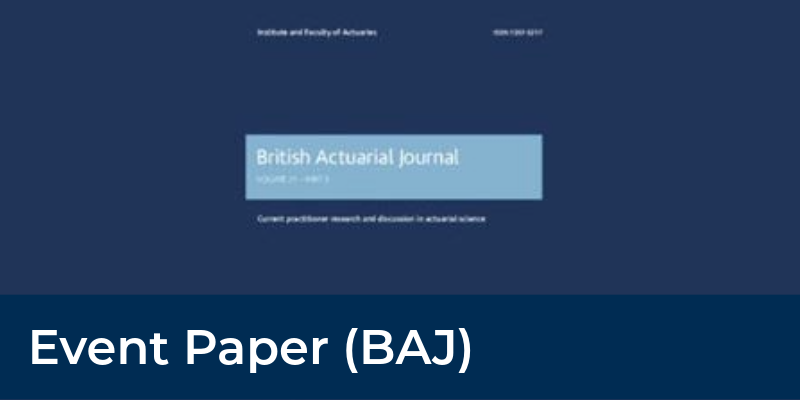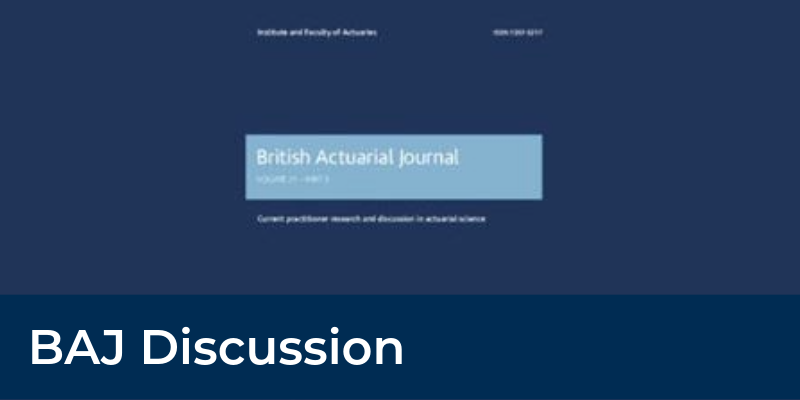Sessional meeting by the Extreme Events Working Party: Calibration of transition risk for corporate bonds
Under the European Union’s Solvency II regulations, insurance firms are required to use a one-year VaR (Value at Risk) approach. This involves a one-year projection of the balance sheet and requires sufficient capital to be solvent in 99.5% of outcomes. The Solvency II internal model risk calibrations require annual changes in market indices / term structure / transitions for the estimation of the risk distribution for each of the internal model risk drivers. Transition and default risk are typically modelled using transition matrices. To model this risk requires a model of transition matrices and how these can change from year to year. In this paper four models have been investigated and compared to the raw data they are calibrated to. The models investigated are: A bootstrapping approach – sampling from an historic data set with replacement The Vasicek model calibrated using the Belkin approach The K-means model – a new non-parametric model produced using the K-mean clustering algorithm A two-parameter model – a new parametric model, using two parameters (instead of a single parameter with the Vasicek) to represent each matrix. The models are compared in a number of ways: A PCA approach that compares how closely the models move compared to the raw data A backtesting approach that compares how each model extreme percentile compares to regulatory backtesting requirements A commentary on the amount of expert judgement in each model Model simplicity and breadth of uses are also commented on. Speakers: Andrew Smith, Forin Ginghina, Gaurang Mehta and James Sharpe. Chair: Parit Jakhria
I confirm I have watched this video:


